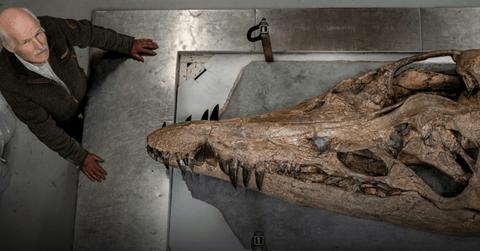Massive Skull of a Prehistoric Sea Monster Was Found Inside a Cliff in Dorset, England
Published Dec. 11 2023, 3:10 p.m. ET
The Gist:
The skull of a pliosaur, a prehistoric marine monster, was found off the coast of Dorset, England.
The fossil was found embedded into the cliffside and took a team of engineers, paleontologists, and even professional climbers to remove.
The discovery and the excavation process is the subject of a David Attenborough BBC special, which will be released on Jan. 1, 2024.
In December 2023, along the coast of Dorset, England, the skull of a sea monster was excavated from a cliffside. The monster, which is referred to as the “T rex of the seas,” is known as a pliosaur, a marine reptile that lived in the oceans 150 million years ago.
The Dorset pliosaur fossil is the most well-preserved of any pliosaur remains in history and the primary subject of a David Attenborough BBC special on Jan. 1, 2024. However, the excavation process was a dangerous feat, where paleontologists and climbers worked to painstakingly remove monstrous bones hanging from the side of a cliff.
Some may argue that discoveries like this are well worth the risk. So what exactly is a pliosaur, and why is this discovery so important?
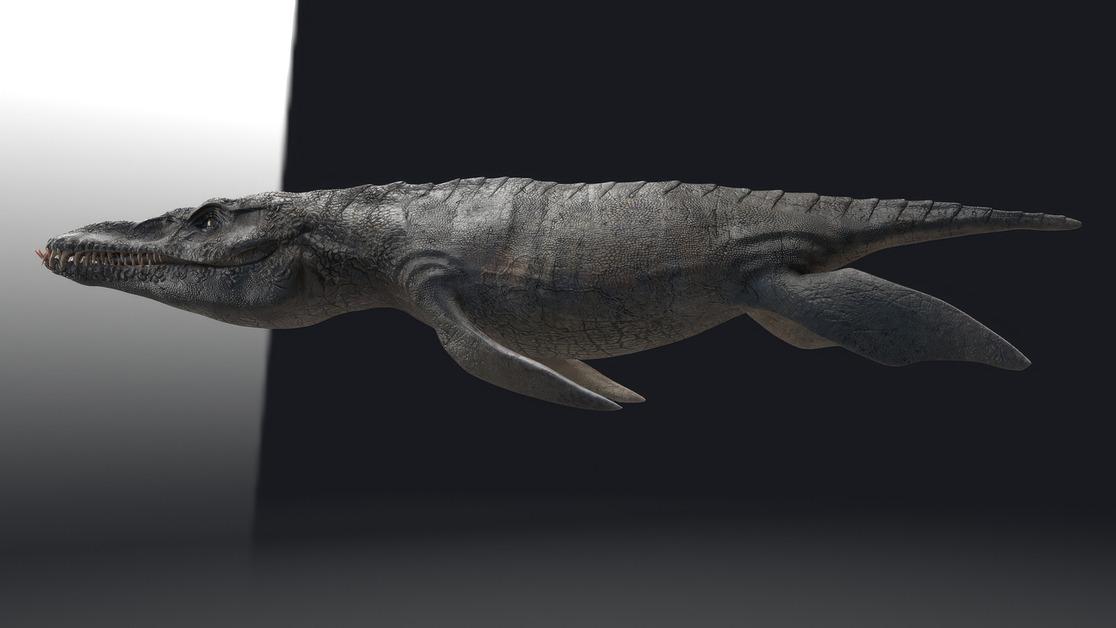
A rare pliosaur skeleton was discovered in Dorset, England.
The Jurassic Coast of Dorset, England, aptly named for its history of prehistoric fossil discoveries, revealed the skull of a pliosaur, a marine reptile that used to be one of the most merciless sea predators thought to have lived over 150 million years ago.
Uncovered by a team led by paleontologist Steve Etches, and with the help of Dorset farmer Rob Vearncombe, getting the pliosaur out of the cliffside was a major challenge. It involved engineering a crate that could suspend off the side of the cliff and carry down pieces of the skull.
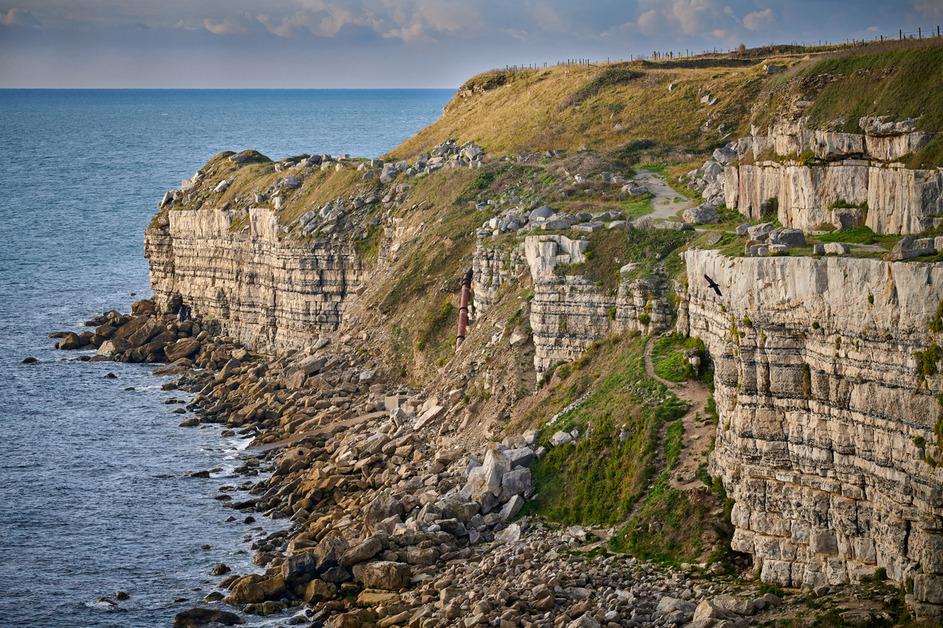
Removing fossils takes great care and precision, and working on a precarious cliffside, that could easily crumble into the sea after too many drills and hammers and heavy rains, the team was risking their life removing the fossil, per The Guardian.
According to the BBC, The process was documented by a film crew and will be featured in a David Attenborough BBC special called “Attenborough and the Giant Sea Monster,” slated to release on New Year's Day 2024.
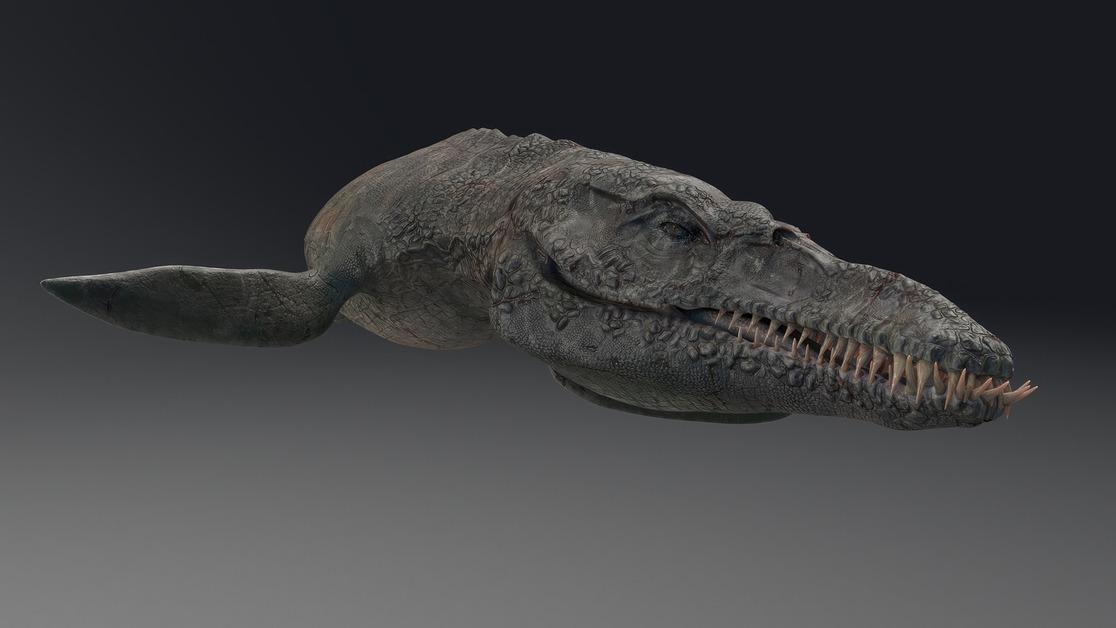
What's the difference between a pliosaur and a mosasaur?
The pliosaur was not the only major sea monster roaming the ocean in prehistoric times. For fans of Jurassic Park, you may be more familiar with the mosasaur. Although the pliosaur and mosasaur looked relatively similar, there are some key differences between the two.
The mosasaur had a slimmer reptilian build, measuring an estimated 56 feet in length, whereas the pliosaur was more heavyset and shorter in length at around 40 feet. However, in terms of brute strength, the pliosaur may have the mosasaur beat.
When hunting the mosasaur is thought to have swallowed the prey whole after catching it, whereas the pliosaur would use its large mouth and teeth to tear even larger animals to pieces, per IFL Science.
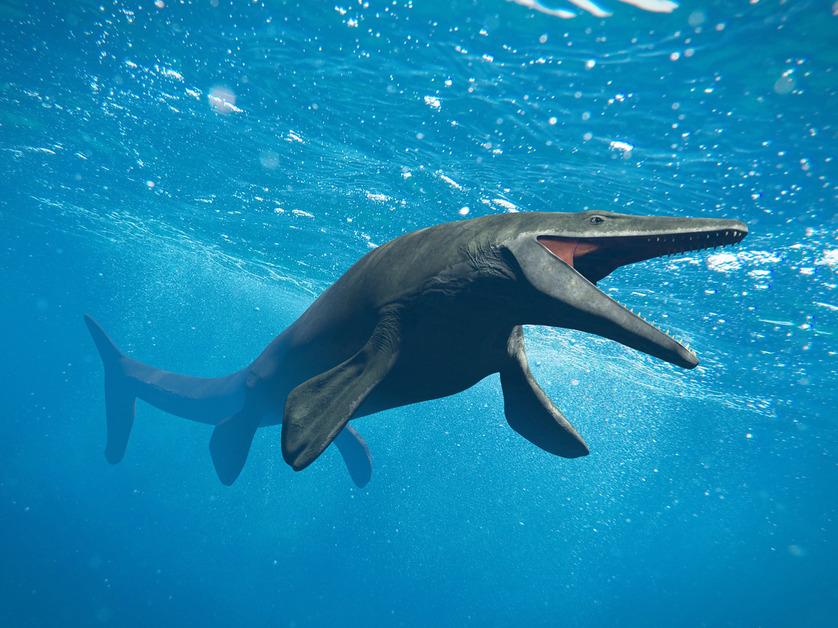
The Dorset pliosaur fossil could reveal more differences between the species. The skull uncovered was six feet long and contained 130 teeth, which would have been to the sharpness of a dagger.
The skull also revealed the possible size of the pliosaur's mouth muscles, which helped researchers conclude that their jaws likely had the force of 33,000 newtons. According to the BBC, this is double that of a saltwater crocodile, at 16,000 newtons, today's most powerful jaw.
